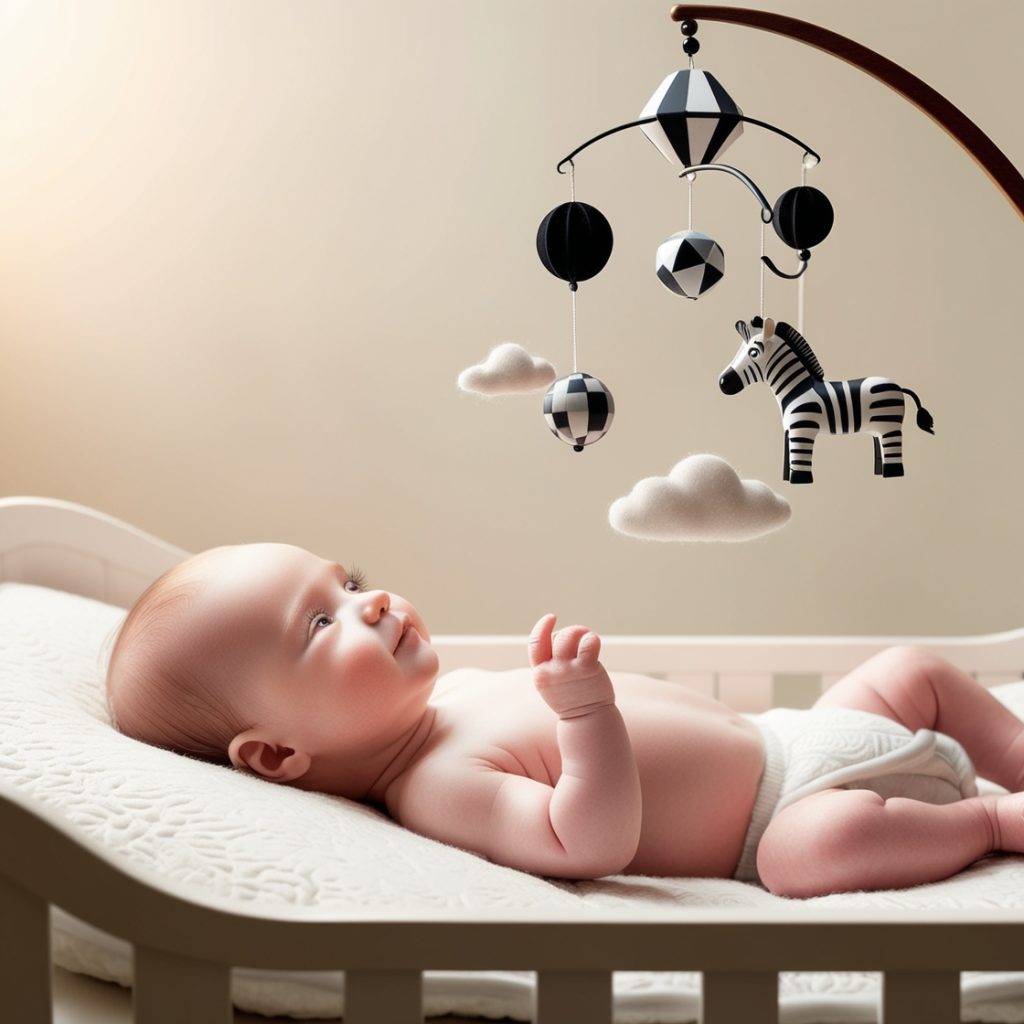Wondering what can your 1-month old baby see? We've got you covered. Understanding your baby's vision development can help you navigate the early months of parenthood. At just one month old, your infant's visual abilities are rapidly evolving. Here’s what you can expect regarding your baby's sight and how you can support their visual development.
Interested in tracking your baby's development?
Keeping track of how your baby is developing can be overwhelming. Try Nanni's free baby tracker for developmental milestones, a simpler way to better understand your baby.
Developing Vision at One Month
Your 1-month old baby's vision is still developing. Newborns typically have blurry vision and a 1-month old baby can only see objects clearly at a distance of about 8 to 12 inches. This distance is perfect for focusing on faces during feedings and cuddles. Infants at this age can detect high-contrast patterns and shapes, but their color vision is not fully developed yet. They are most responsive to black-and-white patterns, which are easier for them to distinguish.
Visual Tracking and Focus
Your 1-month-old is baby starting to practice visual tracking, which involves following moving objects with their eyes. The visual tracking skill is still quite limited at this stage; your baby might follow a slow-moving object or your face with their gaze. As they become more accustomed to focusing, you might notice that they begin to follow your movements more consistently. This tracking ability helps build the foundation for later visual skills.
How can parents support visual development
To support your baby's vision development, you can engage in simple activities such as gently moving a high-contrast toy or your face in front of them. Providing these visual stimuli helps stimulate their interest and encourages visual tracking. It’s also beneficial to spend time talking and making eye contact with your baby, as this can foster bonding and further stimulate their visual development.
At 1-month old, what your baby can see is primarily close-up, high-contrast objects. Their ability to see and track moving items is still in the early stages, but each day brings new developments. By providing visual stimulation and engaging in close interactions, you support your baby’s growing visual skills and contribute to their overall development. By keeping these aspects in mind, you can better understand and support your baby’s visual growth during these formative early months.
The information provided on this site is intended for informational purposes only and is not a substitute for professional medical advice. Always seek the guidance of your doctor, pediatrician, or other qualified healthcare provider with any questions or concerns you may have about your child's health.



